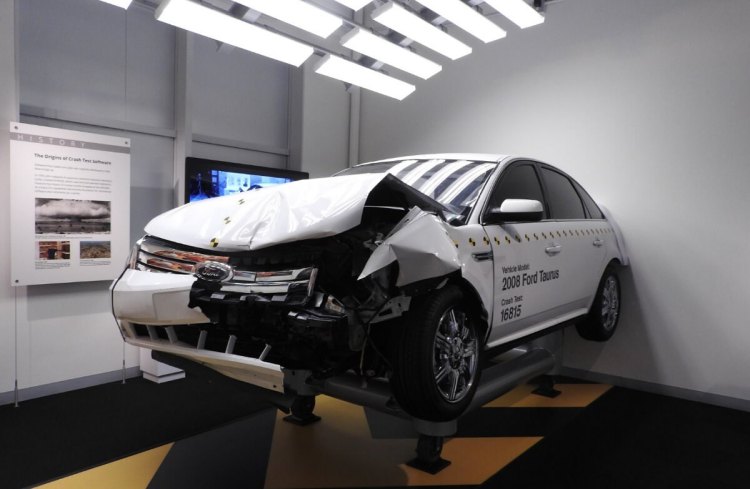The Computer History Museum wanted to show the life and death impact software can have on the world and chose to illustrate that with a display dedicated to automobile crash testing.
On Saturday, the museum opened a new exhibition to the public: “Make Software: Change the World!” The $7 million exhibition’s goal is to show how software engineers, programmers, and other innovators have changed the world with software. It’s designed for ages 10 and up.
The whole exhibit was about five years in the making, and it was undertaken because the museum’s main exhibit, Revolution, was really mostly about hardware, said Kirsten Tashev, vice president of collections and exhibitions at the museum, in an interview with VentureBeat. The crash test is just one part of the “life and death” section of the Make Software exhibition.

Above: A crash dummy at the Computer History Museum.
In the exhibit, you can see the mesh of polygons in the computer simulation. Back in 1994, there were about 28,000 elements in the mesh, as simulated by a super computer. Then in 2000, there were 128,000 elements. By 2012, there were 975,000 elements. And now, there are about 5 million elements in a car simulation.
“The simulations are getting really good,” Spicer said.
Crash test simulations came from an unlikely origin. An engineer named John Hallquist joined the Lawrence Livermore National Laboratory in 1976. He was assigned to work in the lab’s Nuclear Explosives Engineering Division. His job was to develop software to work on supercomputers to measure the impact of atomic bombs dropped at low altitudes.

Above: Kirsten Tashev, vice president of collections and exhibitions at the Computer History Museum.
Hallquist created a program called Dyna3D, and that code turned out to be really significant. He asked Lawrence Livermore to release the code as open source so that he could commercialize it. And the lab put the code into the public domain in 1978.
The LS-Dyna software was used as the basis for the first automotive crash-test software. Hallquist saw how it could be used to solve problems in simulations where there were a lot of parts.
“It was quite a bold step for them to take classified code and release it,” said Dag Spicer, senior curator at the Computer History Museum.
Car makers used it to comply with regulations from the National Highway Traffic Safety Administration, and the Computer History Museum documented this story in its crash-test display, which is meant to show off the tangible results of software for museum attendees, Spicer said.
The exhibit features a 2008 Ford Taurus that was crashed at 35 miles per hour. You can go inside the vehicle and watch a movie of the physical crash.
“They still do physical crashes to test their data, but most of it is done in simulations now,” Tashev said.


